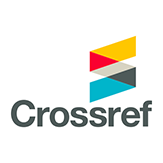Increasing Cigarette Excise Tax Prevents Smoking Initiation in Children and Finances National Health Insurance in Indonesia
Abstract
Keywords
References
(1) Boonn, A. 2018. Raising cigarette taxes reduces smok-ing, especially among kids (and the cigarette compa-nies know it) . Washington, District of Columbia. Accessed: 6 January 2019
(2) Bosnia, T. 2018. Blokir Berlaku, Ada 63 Juta Nomor HP yang Belum Teregistrasi. Accessed: 13 De-cember 2018 .
(3) CTFK. 2016. The Toll of Tobacco in Indonesia. Ac-cessed: 6 May 2019 .
(4) Databoks. 2018. Defisit dan Penyertaan Pemerintah ke BPJS Kesehatan (2014-2017). Accessed: 15 De-cember 2018
(5) Gardner, B. and West, R. 2010. Public support in En-gland for raising the price of cigarettes to fund tobacco control activities. BMJ Open. 19(4): 331–333.
(6) Ghada N., R. et al. 2003. Impact of religious rulings (Fatwa) on smoking . Journal of the Egyptian Soci-ety of Parasitology. 33(3):1087–1101.
(7) Ghouri, N., Atcha, M. and Sheikh, A. 2006. Public health Influence of Islam on smoking among Muslims. BMJ Open. 332: 291–294.
(8) Global Tobacco Free Kids. 2017a. Tobacco Tax Success Story, Global Tobacco Free Kids. Accessed: 18 Jan-uary 2019 .
(9) Global Tobacco Free Kids. 2017b. Tobacco Tax Success Story, Global Tobacco Free Kids. Accessed: 18 Jan-uary 2019 < https://www.tobaccofreekids.org/as-sets/global/pdfs/en/success_Philippines_en.pdf>.
(10) Hamilton et al. 2005. Who Supports Tobacco Excise Taxes? Factors Associated With Towns’ and Individ-uals’ Support in Massachusetts . Journal of Public Health Management & Practice. 11(4): 333–340. van Hasselt, M. et al. 2015. The relation between tobac-co taxes and youth and young adult smoking: What happened following the 2009 U.S. federal tax increase on cigarettes?. Addictive Behaviors. 45: 104–109. Hidayat, B. et al. 2017. Ringkasan Studi : Menentukan Harga Rokok Ideal. Depok: Center for Health Eco-nomics and Policy Studies Universitas Indonesia. Hill, S. et al. 2014. Impact of tobacco control interventions on socioeconomic inequalities in smoking: Review of the evidence. Tobacco Control. 23(e2): e89–e97.
(11) International Agency for Research on Cancer. 2011. IARC Handbooks of Cancer Prevention Tobacco Con-trol Volume 14: Effectiveness of Tax and Price Policies for Tobacco Control, World Health Organization.
(12) Jha, P. and Peto, R. 2014. Global Effects of Smoking, of Quitting, and of Taxing Tobacco. The New England Journal of Medicine. 370(1): 60–68.
(13) Kementerian Kesehatan Republik Indonesia. 2018a. Hasil Utama RISKESDAS 2018 . Badan Penelitian dan Pengembangan Kesehatan. Jakarta:Kemente-rian Kesehatan Republik Indonesia. p.123-124.
(14) Kementerian Kesehatan Republik Indonesia. 2018b. Hasil Utama RISKESDAS 2018, Badan Penelitian dan Pengembangan Kesehatan. Jakarta:Kementerian Kesehatan Republik Indonesia. p.125.
(15) Kostiva, D. et al. 2010. Prices and Cigarette Demand: Evidance from Youth Tobacco Use in Developing Countries . 15781. Cambridge.
(16) L’Engle, K. et al. 2018. Survey research with a random digit dial national mobile phone sample in Ghana: Methods and sample quality. PLoS ONE. 13(1): 1–11.
(17) Moeloek, N. 2016. Pengantar Dialog: Dialog Kon-struktif Pemangku Kepentingan untuk Peningkatan JKN”’. Jakarta, 30 May 2016.
(18) Park, E. J. et al. 2015 ‘What cigarette price is re-quired for smokers to attempt to quit smoking? Findings from the ITC Korea waves 2 and 3 sur-vey’, Tobacco Control. 24(2008): iii48-iii55.
(19) Pierce, J. P., White, V. M. and Emery, S. L. 2012. What public health strategies are needed to reduce smoking initiation?. Tobacco Control. 21(2): 258–264.
(20) Singapore Customs (2018) List of Dutiable Goods, Government of Singapore. Accessed: 20 February 2019 .
(21) Song, A. V. et al. 2009. Perceptions of smoking-related risks and benefits as predictors of adolescent smok-ing initiation. American Journal of Public Health. 99(3): 487–492.
(22) Tabuchi, T. et al. 2016. Tobacco Price Increase and Smoking Cessation in Japan, a Developed Coun-try With Affordable Tobacco: A National Popula- tion-Based Observational Study. Journal of Epide-miology. 26(1):14–21.
(23) Tan, Y. L. 2016 Earmarked tobacco taxes : Lesson learnt from nine countries. Geneva: World Health Organization.
(24) Thabrany, H. and Laborahima, Z. 2016. People’s Sup-port on Sin Tax to Finance UHC in Indonesia, 2016, Jurnal Ekonomi Kesehatan Indonesia. 1 (1):1-11.
(25) The AstraZeneca Young Health Programme. 2011. Non-Communicable Diseases and Adolescents: An opportunity for action. Cambridge. p. 1-20.
(26) Thomas, S. et al. 2008. Population tobacco control interventions and their effects on social inequali-ties in smoking: Systematic review. Tobacco Con-trol.17(4): 230–237.
(27) U.S. Department of Health and Human Services. 2010. How Tobacco Smoke Causes Disease: The Biology and Behavioral Basis for Smoking-Attrib-utable Disease: A Report of the Surgeon General., U.S. Department of Health and Human Services, Centers for Disease Control and Prevention, Na-tional Center for Chronic Disease Prevention and Health Promotion, Office on Smoking and Health.
(28) U.S. Department of Health and Human Services. 2014. The Health Consequences of Smoking—50 Years of Progress A Report of the Surgeon General. A Report of the Surgeon General. p. 1081.
(29) Vardavas, C. I. et al. 2012. Tobacco taxation: The im-portance of earmarking the revenue to health care and tobacco control. Tobacco Induced Diseases. 10(1): 1–6
(30) WHO. 2008. MPOWER: Six policies to reverse the to-bacco epidemic. World Health Organization, pp. 23–41.
(31) WHO Regional Office for Europe. 2007. The Europe-an Tobacco Control Report: 2007 . Denmark: World Health Organization Europe.
(32) WHO Tobacco Free Initiative. 2004. Building blocks for tobacco control: a handbook. Geneva.
(33) World Bank. 2017. Total Population. Accessed: 6 May 2019
(34) World Health Assembly. 2011. Youth and health risks.
(35) World Health Organization. A64.28(May), pp. 1–4.
(36) World Health Organization. 2018. Fact-sheet 2018 Indonesia. p. 2. doi: 10.1056/ NEJM200208153470717.
DOI: 10.7454/eki.v3i2.3033
Refbacks
- There are currently no refbacks.








